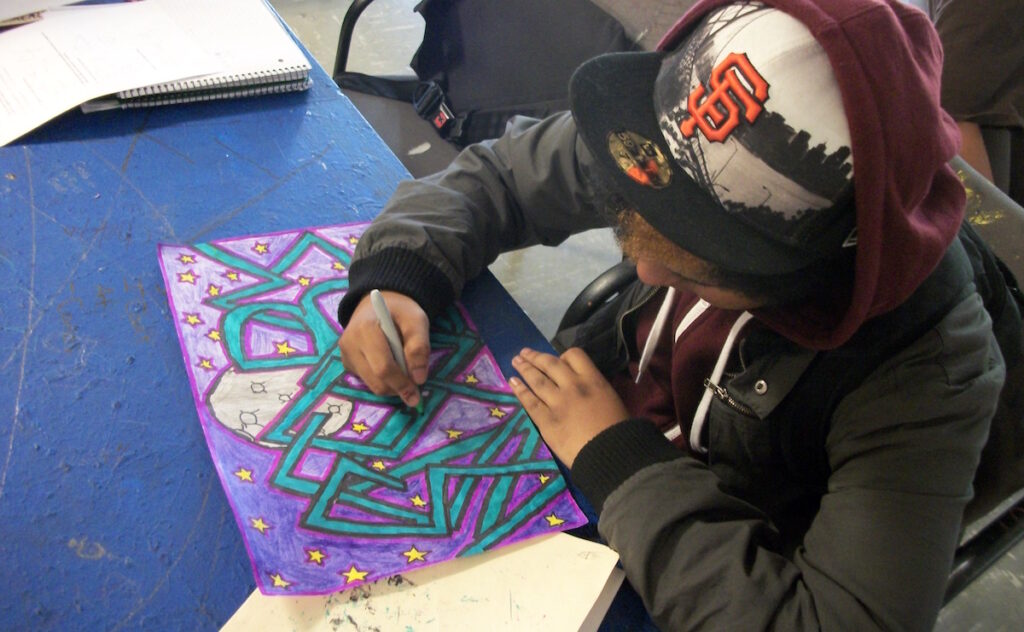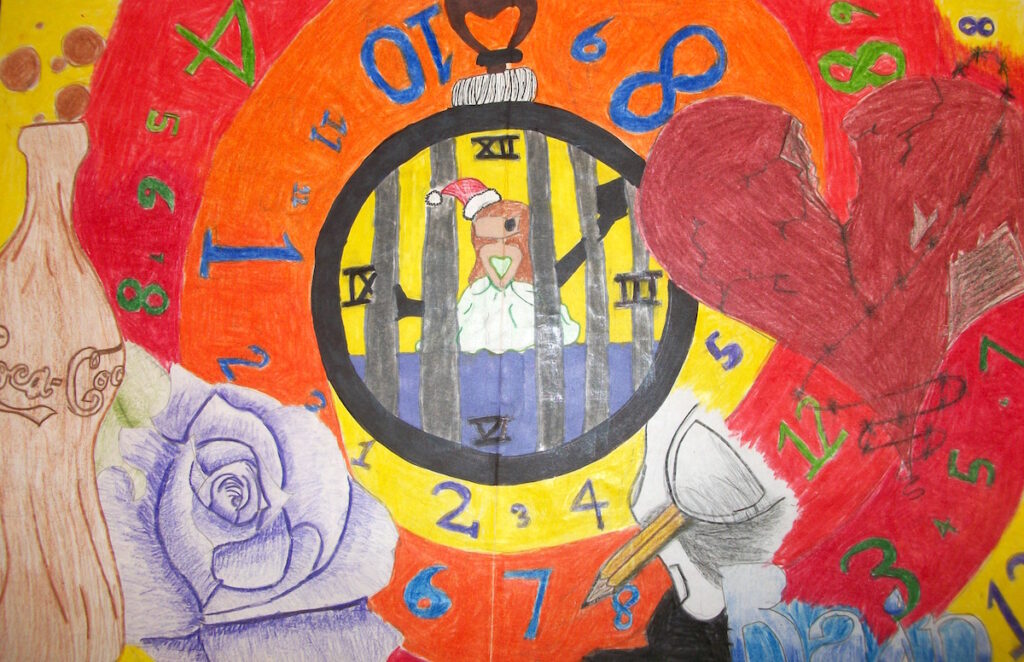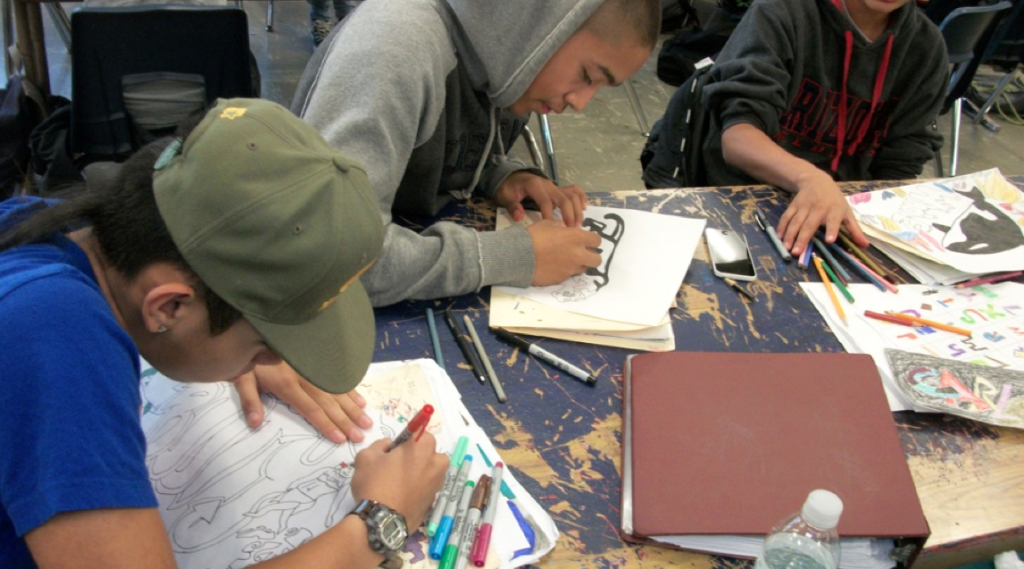Editor’s Note: Today we welcome Matt Christenson to the AOE Writing Team! Matt is a high school art teacher from San Francisco, California with a passion for creating an engaging, relevant curriculum for his students. In addition to teaching visual arts, Matt also teaches mural design. Learn more about Matt on our About Page!
Have you ever considered bringing the study of graffiti art into your classroom? The word “graffiti” in school settings can bring up instant feelings of discomfort and danger. After all, the origins of graffiti art come from the illegal vandalism of public and private property. As art educators, we can analyze the differences between legal and illegal graffiti with students. We can use legal graffiti murals, commissioned pieces, and gallery works to enhance our curriculum.
Graffiti-inspired curricula can engage, motivate, and advance every student. Whether you teach in a rural community or bustling city scene, bringing graffiti into the classroom can transform students into artists.

Relevant and meaningful content increases student investment with the material. Graffiti-inspired studies can develop student knowledge of identity, interdisciplinary content, symbolism, metaphor, and artistic conventions. You don’t need spray paint and drippy markers to create graffiti-inspired content. Students can design dynamic graffiti-inspired work using markers, colored pencils, pastels, or paints.
Here are 6 Reasons to Teach Graffiti in Your Art Room
1. Graffiti Is Personally Meaningful

Graffiti art is found everywhere. Art educators can use exemplars from student towns, cities, and neighborhoods to help captivate their classes. Popular visual culture is saturated with graffiti art. Commercials, movies, music videos, and documentaries have used this art form to attract young audiences. Students of all backgrounds have been exposed to graffiti art.
2. Graffiti Is Academic
Graffiti is a combination of imagery and text. Usually, the text is a “code name,” or a unique aspect of the individual’s identity. Students can create and design their own code name to represent an aspect of their own identity. The compositions students create incorporate imagery demonstrating their understanding of symbolism, metaphor, and artistic conventions.
3. Graffiti Helps Students Express Themselves

Graffiti-inspired art provides students a safe, academic way to help express and explore identity. Choosing a code name to display is personal, yet allows for a sense of secrecy. Seeing each individual’s work and questioning the meaning behind each piece creates a sense of collective intrigue.
4. Graffiti Connects to Language Arts
Graffiti artists are often called “writers.” There is significant interdisciplinary content overlap between studies in graffiti and language arts. Concepts such as symbolism, metaphor, and irony are applied to both disciplines. Students can show their knowledge of these concepts through their text and imagery choices. Educators can develop integration opportunities throughout the process of choosing code names and incorporating imagery.
5. Graffiti Incorporates Artistic Conventions

The three elements of graffiti are direct parallels to the first three elements of art. In graffiti, works evolve as tags, throws, and pieces. These are in direct correlation to line, shape, and form. The study of graffiti lettering can provide students access to artistic concepts. One-point perspective, overlap, and depth in space are natural conventions used in graffiti. Drawing techniques are used to design the imagery in each piece. Color theory is demonstrated through studying the color wheel and applying various color combinations. Gradation is another convention often studied and practiced by graffiti artists.
6. Graffiti is Everywhere
Graffiti art provides endless exemplars for students to study. Examples are abundant on local, state, national, and global levels. Students who have more exposure to graffiti culture can also become resident artists and experts. That kind of acknowledgment can provide the most struggling students with a positive, academic connection to school.
In Case You’re On The Fence
A powerful art program challenges students to think about what they believe and what they have to say to the world. Many students can disengage with the curriculum when art education only provides “high art” exemplars that are often disconnected from their lives. The study of graffiti validates the lives of young people who tend to favor this aesthetic and tradition. Our most struggling students, as well as our most advanced artists, can all benefit from engaging in graffiti-inspired curricula.
What possible challenges or struggles do you anticipate when introducing graffiti-inspired content?
What kinds of content requirements would you include for your students in graffiti-inspired assignments?
Magazine articles and podcasts are opinions of professional education contributors and do not necessarily represent the position of the Art of Education University (AOEU) or its academic offerings. Contributors use terms in the way they are most often talked about in the scope of their educational experiences.






